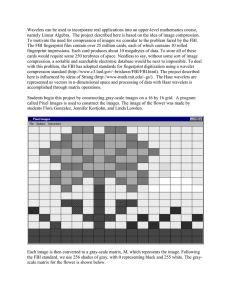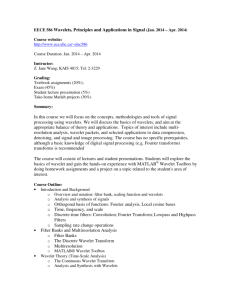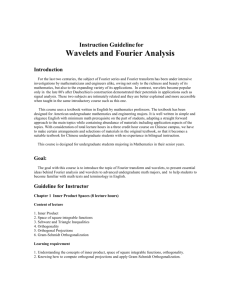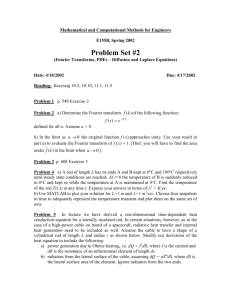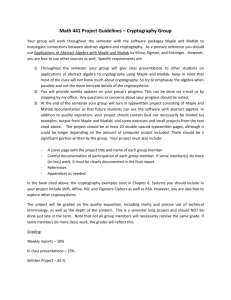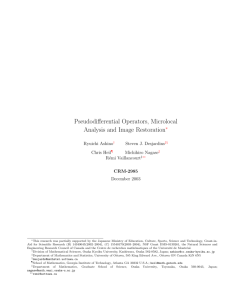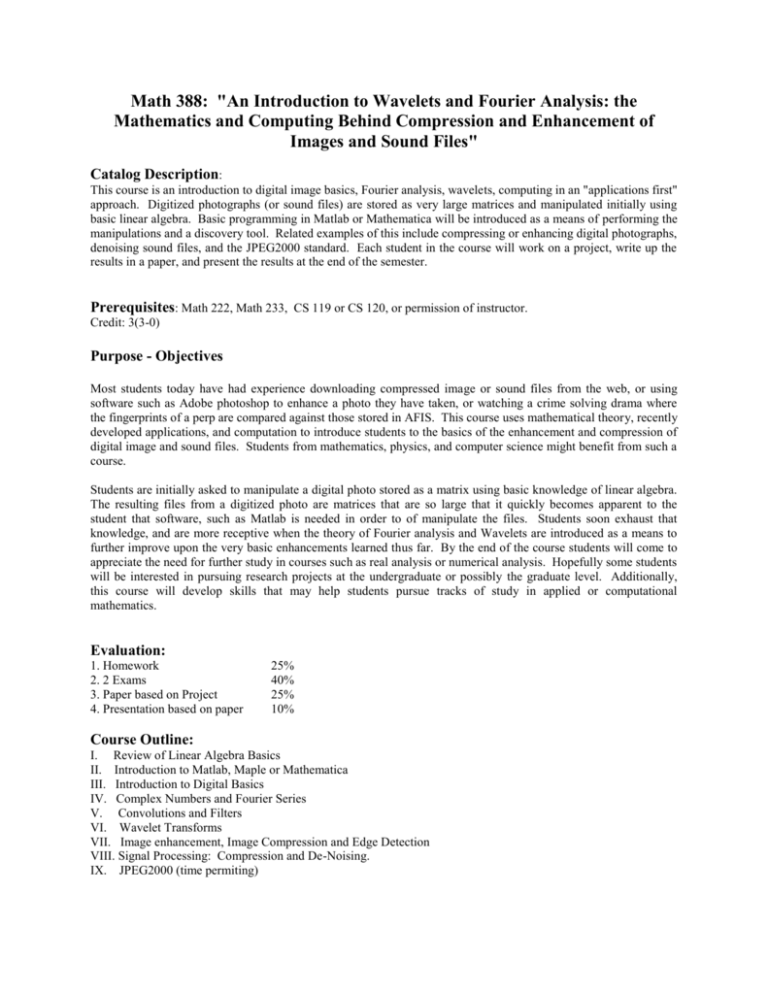
Math 388: "An Introduction to Wavelets and Fourier Analysis: the
Mathematics and Computing Behind Compression and Enhancement of
Images and Sound Files"
Catalog Description:
This course is an introduction to digital image basics, Fourier analysis, wavelets, computing in an "applications first"
approach. Digitized photographs (or sound files) are stored as very large matrices and manipulated initially using
basic linear algebra. Basic programming in Matlab or Mathematica will be introduced as a means of performing the
manipulations and a discovery tool. Related examples of this include compressing or enhancing digital photographs,
denoising sound files, and the JPEG2000 standard. Each student in the course will work on a project, write up the
results in a paper, and present the results at the end of the semester.
Prerequisites: Math 222, Math 233, CS 119 or CS 120, or permission of instructor.
Credit: 3(3-0)
Purpose - Objectives
Most students today have had experience downloading compressed image or sound files from the web, or using
software such as Adobe photoshop to enhance a photo they have taken, or watching a crime solving drama where
the fingerprints of a perp are compared against those stored in AFIS. This course uses mathematical theory, recently
developed applications, and computation to introduce students to the basics of the enhancement and compression of
digital image and sound files. Students from mathematics, physics, and computer science might benefit from such a
course.
Students are initially asked to manipulate a digital photo stored as a matrix using basic knowledge of linear algebra.
The resulting files from a digitized photo are matrices that are so large that it quickly becomes apparent to the
student that software, such as Matlab is needed in order to of manipulate the files. Students soon exhaust that
knowledge, and are more receptive when the theory of Fourier analysis and Wavelets are introduced as a means to
further improve upon the very basic enhancements learned thus far. By the end of the course students will come to
appreciate the need for further study in courses such as real analysis or numerical analysis. Hopefully some students
will be interested in pursuing research projects at the undergraduate or possibly the graduate level. Additionally,
this course will develop skills that may help students pursue tracks of study in applied or computational
mathematics.
Evaluation:
1. Homework
2. 2 Exams
3. Paper based on Project
4. Presentation based on paper
25%
40%
25%
10%
Course Outline:
I. Review of Linear Algebra Basics
II. Introduction to Matlab, Maple or Mathematica
III. Introduction to Digital Basics
IV. Complex Numbers and Fourier Series
V. Convolutions and Filters
VI. Wavelet Transforms
VII. Image enhancement, Image Compression and Edge Detection
VIII. Signal Processing: Compression and De-Noising.
IX. JPEG2000 (time permiting)
Bibliography
A. O. Bretscher, Introduction to Linear Algebra with Applications, Pearson Prentice Hall, 2005.
B. M.W. Frazier, An Introduction to Wavelets Through Linear Algebra, Springer, 1990.
C. R. C. Gonzalez, R.E. Woods, S. L. Eddins, Digital Image Processing Using Matlab, Pearson Prentice Hall,
2004.
D. F.J. Narcowich, A. Boggess, A First Course in Wavelets with Fourier Analysis, Prentice Hall, 2001.
E. S. Smith, Digital Signal Processing: A Practical Guide for Engineers and Scientists, Newnes, Elsevier Science,
2002.
F. P.J. Van Fleet, Discrete Wavelet Transfroms- An Elementary Approach with Applications, 2007. (possible text)



